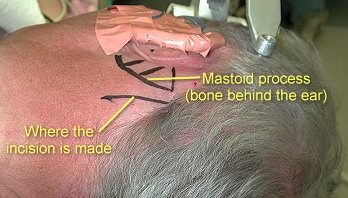 |
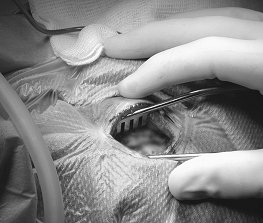 |

B. Microvascular Decompression
Surgery
Microvascular decompression (MVD) surgery is performed under general anesthesia, through an incision and small thumbprint sized bony opening behind the ear (craniotomy). The surgeon peers into the opening through an operative microscope, looks around the cerebellum (a structure of the brain) and visualizes the trigeminal nerve as it arises from the brain stem (the trigeminal nerve root entry zone).
 |
 |
The aim of MVD surgery is to alleviate
neurovascular compression upon the trigeminal
nerve root. This permits the trigeminal nerve nucleus to recover from
its state of hyperactivity and return to a normal, pain free condition.
Micro-instruments are used to mobilize the offending vessels away from the trigeminal nerve
root. The decompression is permanently maintained
by inert implants, such as those made of shredded Teflon® felt, between
the offending vessels and nerve.
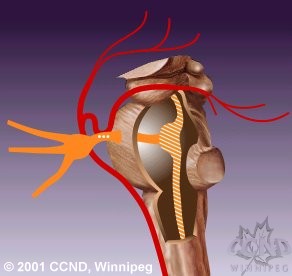 |
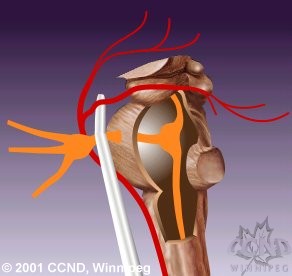 |
|||
|
Prior to
MVD.
|
During MVD,
the vessel is mobilized away from the nerve root entry zone.
|
|||
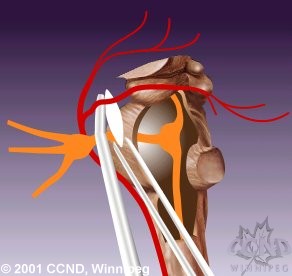 |
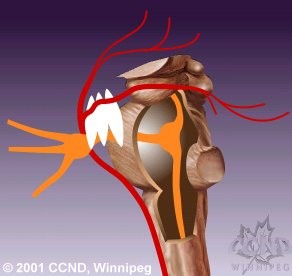 |
|||
|
The decompression
is maintained with shredded Teflon® felt implants.
|
MVD has
resulted in permanent alleviation of the neurovascular compression.
|
|||
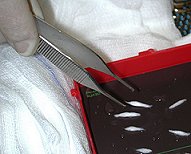 |
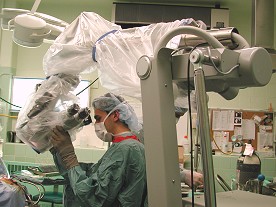 |
|||
|
Inert shredded
Teflon® felt implants.
|
Operating
microscopes
|
|||
Following the microvascular decompression, the bone and incision are closed. The patient is awoken from the anesthetic and is taken to the recovery room. Most patients then remain in hospital for a couple of days, and gradually return to full activities within a few weeks. TN pain relief is usually immediate, and medications are gradually discontinued over two weeks following surgery. If pain does recur, it may be more easily treated with medications than before, or retreated with any of the neurosurgical procedure options.
MVD is a non-destructive technique,
and has the best potential for long-term relief or cure of TN pain.
However, there is a small risk of complications
related to cranial nerve damage including hearing loss and facial numbness.
Intra-Operative Monitoring
has improved the safety of this procedure. Other risks include the rare incidence
of post-operative infection, inflammation or healing difficulty leading to CSF
leak. The risk of developing some facial numbness is very small, and the
development of deafferentation pain or anesthesia
dolorosa is almost unheard of. Other serious
complications related to stroke, bleeding, or swelling are exceptionally rare
at centres with special expertise in performing MVD surgery.
Next
Section >>
<< Return to Table of Contents
Click
here to return to the
Trigeminal Neuralgia
Web-Site at the Centre for
Cranial Nerve Disorders
A.
M. Kaufmann & M. Patel
Centre for Cranial Nerve Disorders
Winnipeg, Manitoba, Canada
© 2001